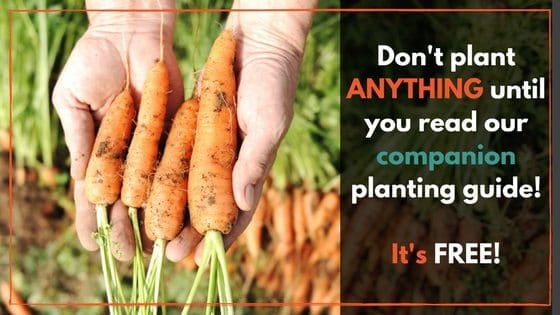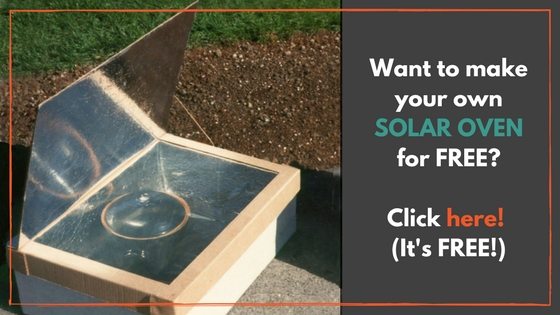Before planting, select a sunny site, and incorporate compost into the soil. Test the soil because a pH higher than 6 and lower than 5 makes it difficult for the seeds to sprout.
Soak the seeds for 24 hours before direct sowing them to speed up germination.
Plant seeds ½ inch deep and thin to 2 inches apart when the seedlings are 4 inches tall.
Snip the seedlings you’re removing (instead of pulling them out of the soil) so you don’t disturb the soil.
As your beets grow, be sure to water regularly and mulch so their growth isn’t stunted.
Succession plant every 14 days until temperatures are higher than 70 degrees for a continual harvest.
Carrots
We like to grow carrots on the farm for ourselves and the rabbits. Luckily, they’re a great crop to start early.
Carrots don’t transplant well, so growing them in a cold frame is perfect!
Direct sow seeds about 4 weeks before the last frost date for your area. Seeds should be 3-5 inches apart, and leave 12 inches between rows.
Till the soil well so it’s light (easier for carrots to push into). Be sure the soil is free of stones so your carrots grow straight.
Thin the seedlings to 3 inches apart when they’re about an inch tall, and fertilize with compost (not manure) 5 weeks after they sprout.
Cabbages
Cabbage prefers to only grow in cold temperatures, and as soon as heat hits our farm, cabbage season is as good as over.
Start sowing cabbages 4 weeks before the last spring frost, or when the ground is workable.
Kale
Kale is an incredibly resilient plant and thrives in colder temperatures, and the funny thing about kale, is it tastes better if it’s been through a frost!
We broadcast kale seeds because they’re so tiny, and the plants thrive well in close quarters as long as you fertilize and water regularly.
Cover lightly with dirt and mist regularly. In 3-4 weeks, you should see seedlings. Thin with scissors when seedlings are 4 inches tall.
Be sure to harvest the outer leaves of kale before they get too big to ensure they’re still tender and not bitter.
Leeks
These green treats resemble giant scallions, and are excellent for sub-freezing temperatures – they have proven to be cold-hardy down to approximately 5° Fahrenheit!
(Not sure how to cook with leeks? Here’s a great recipe for Oven Baked Eggs With Leeks & Blue Cheese!)
Parsnips
We love parsnips on our farm, and they’re great in soups and stews. Since our Marches are relatively warm compared to the rest of the country, we start our parsnips so they’re ready for harvest before it gets super hot.
Parsnips are great to start mid March (or as soon as the soil is workable) because they need a long growing season.
To grow parsnips, direct sow because they’re finicky about transplanting (I’ve never been successful).
Till the soil about 12 inches, and mix in a 2 inch layer of compost or rotted manure before sowing.
Sow 2 seeds per inch ½ an inch deep.
When seedlings emerge (in about 2-3 weeks,) thin so the seedlings are 4 or so inches apart.
Water in hot weather if you’ve had less than 1 inch of rain. Side dress with compost if the plants seem stressed.
Spinach
Spinach does not transplant easily, so direct sowing in a cold frame is best.
Spinach needs 6 weeks of cool weather to grow to harvest size properly, so as soon as the soil is workable, sow spinach in a cold frame.
Soil temperature should not exceed 70 degrees to ensure your spinach germinates.
You should choose a site that gets full sun.
Sow spinach ½ inch deep. We broadcast our spinach seeds since they’re so small.
To ensure a consistent harvest, plant spinach successively every 2-3 weeks until it’s too hot outside for the plant.
Onions
This robust crop can easily withstand freezes and frosts, making them perfect for a cold frame. You can grow onions from seeds or sets; starting with sets is a bit easier.
When planting onions, it’s important to remember that they need full sun in order to grow healthy, so make sure your cold frame is in a sunny location.
Plant as soon as the soil is workable, as long as temperatures aren’t going to dip too low.
Plant in rows 12 inches apart, and about 1 inch deep for sets.
Like carrots, onions need loose soil to grow correctly, so till the ground well before planting. Incorporate compost into the soil; onions are heavy feeders. Side dress with compost every 1-2 weeks.
Swiss Chard
This crop is quite cold-hardy and can be started in a cold frame 2-3 weeks before the last spring frost date, as soon as the soil is workable.
Before planting, add compost into the soil (our compost is very well composted, so sometimes we just plant in that, rather than go through the extra step of tilling).
Plant seeds ½ inch deep. It’s simplest to broadcast the seeds, then cover lightly with dirt.
Succession plant seeds every 2 weeks for a continued harvest.
Turnips
Turnips are a fairly easy crop to grow, and we like them because you can grow them for the roots AND the greens (livestock LOVE the greens…me? Not so much)
Like many other vegetables on this list, turnips need full sun, and light, loosened soil to grow properly.
Before planting, incorporate compost into the soil, and till the soil well so it’s loose. You can plant turnips as soon as the ground is workable.
We broadcast our turnips and just cover lightly with dirt. Because the seeds are so tiny, it doesn’t make sense to plant them individually.
After the seedlings are 4 inches tall, thin them to about 3 inches apart, snipping off seedlings at the base so you don’t disturb the remaining sprouts.
Mulch to retain moisture.
** Remember: With all of these vegetables, you can recycle snipped seedlings as food for your chickens, rabbits, or other livestock!
I’d like to hear from you!
Which vegetables will you start in cold frames? Leave a comment below!


